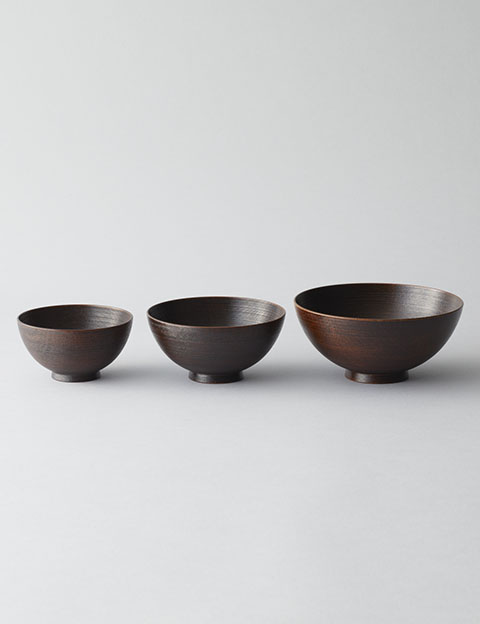YAMANAKA Shikki (Lacquerware)

The origins of Yamanaka lacquerware date back to the second half of the 16th century, when a group of craftsmen moved to the area in search of materials and began lathing bowls and other items.
In the 18th century, the craft continued to develop as visitors to the local hot springs started buying bowls, trays and other household and novelty items. During the first half of the 19th century, the maki-e technique of applying gold and silver dust was introduced and became the basis for Yamanaka's own unique raised maki-e technique.
Many lacquerware artisans from Yamanaka continue to win prizes for their work. At exhibitions for traditional crafts, pieces with patterns of fine lines produced using the sensuji technique and the zogan inlay technique receive particular praise. A special feature of Yamanaka lacquerware is the raised maki-e designs on bowls and other items, created by mixing gold or silver dust with the lacquer before it is applied. Blending modern and traditional tastes, a wide range of items are produced today, including tableware such as bowls, trays, coasters and stacking boxes ( jubako) for festive occasions, and tea ceremony items such as natsume caddies for powdered green tea.
Feature
Pieces made using traditional kashoku-biki techniques to carve exceptionally fine grooves (sensuji) or inlays (zogan) are highly valued. Yamanaka lacquerware is characterized by taka-maki-e, an embossed gilt lacquerwork in which the lacquered portion is raised. Such pieces are popular as household items, thanks to their blending of tradtional tastes and modern sensibilities.
How to make
The wood is cut longitudinally to minimize distortions and the base is made on a potter's wheel. Next, the base is treated with zinoko powder and coated with vermilion and black lacquer. Finally, embossed gilt lacquer decorations are added on top. Each step is performed by different artisans who are experts in their respective techniques. Some pieces are also given a thin, color lacquer finish (suriurushi) to highlight the kashoku-biki work.

